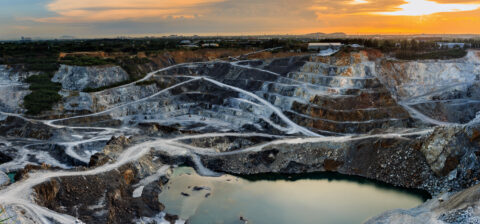SA Mining
Renewable Energy
As one of the most energy-intensive industries in the world, the mining industry in South Africa has suffered a double blow. Having been severely impacted by the continued energy shortfall and ongoing load shedding, it has also, over the years, come under increased scrutiny from climate change activists and investors.
And while the mining industry is not one that has traditionally been associated with clean, efficient, renewable and sustainable energy solutions, that is changing.
Key to this change is the deregulation of private energy generation. The changing regulatory landscape to be ushered in following the assurances in that regard given by President Cyril Ramaphosa on 10 June 2021 will be a fundamental catalyst that could unlock the full extent of the vast potential of the mining industry as an essential contributor to the development of renewable energy solutions.
As part of this deregulation, amendments to Schedule 2 of the Electricity Regulation Act will increase the National Energy Regulator of South Africa’s (NERSA) licensing threshold for embedded generation projects from 1MW to 100MW.
Although it is still unclear what the registration requirements will be for these larger projects, there have been indications in the president’s speech as to what we can expect, including compulsory registration with NERSA (notwithstanding the removal of the licence application process) and a requirement to obtain authorisation from NERSA to operate.
There is some concern as to what this alternative process will entail and whether it will be practical to achieve the desired outcome of reducing the impediments to investments in such projects and enabling business to build or co-own generation facilities to contribute towards meeting their own energy needs.
Provision has been made in the current Integrated Resources Plan, 2019, for 4 000MW of new additional capacity by 2030 which will come from, among others, distributed generation capacity for own use, which are generation facilities operated solely to supply electricity to an end-use customer within the same property as the facility (also referred to as “embedded generation”).
As such, there is a committed allocation to allow for power generation for own use and an express undertaking from government to take the necessary action to achieve energy security and reduce the impact of load shedding on business.

There is also an acknowledgement that Eskom is not capable of sustaining its favoured monopoly position as sole state power utility, generating, transmitting and distributing power and that there is a need to reduce this burden. The ability that private generators will have to wheel electricity through the transmission grid is a telling indicator of where government is heading in relation to partnering with the private sector in addressing the energy needs of the country.
Poised as we are at the precipice of what may well become a new era of alternative sources of energy supply for the country, the mining industry is in the enviable position of being one of the most critical drivers of our time. This is so for a number of reasons.
Most of Southern Africa is in the favourable position of having abundant access to the elements, namely sunlight and wind. Adequately harnessing these natural resources allows for organisations to positively affect the environmental footprint of their operations. The remoteness of mining operations then becomes less of a risk in accessing sources of energy but more an opportunity to harness it.
This, coupled with the access that mining operations have to large tracts of land, positions them perfectly for accommodating larger solar PV plants, solar and battery storage solutions and, weather permitting, wind farm projects. It is also the mining industry that provides us with the metals and minerals required for these technologies that are essential for the transition to a green economy.
Of course the mining industry also stands to gain from this paradigm shift in alternative sources of energy, with the prospect of reduced dependence on fossil fuels minimising the impact of load shedding and volatile price fluctuations in fossil fuels on operations and profitability, improvements in energy efficiency increasing productivity and an enhanced ESG profile improving its attractiveness to all stakeholders.
The reality of a fairly regular disrupted energy supply over the years has meant that most established mining companies in South Africa had shifted their schedules to negate the impact of load shedding. The looming changes in legislation for increased off-grid production of power has mining houses excited. What needs to be legislated for now is how to ensure that a portion of this is from renewable sources and remains so.
The mining industry has already indicated renewable energy capacity gearing up over the years, although the build limitations and licence process has been prohibitive in bringing these projects to fruition. It is hoped that the new regulations will unlock this potential, and go some way towards introducing certainty, promoting investor confidence, stimulating production and boosting the economy.
We have an opportunity to move not only towards decarbonisation but also the decentralisation of power supply, a somewhat fortuitous two-pronged solution to address both the climate change objectives of the country as well as the economic recovery and growth needed as we continue to overcome the effects of the pandemic.
While the change may not be immediate or the effects felt within the next six months, by the end of next year we will probably have seen the beginnings of quite a fundamental shift, initially in the way the mining industry approaches its own energy supply, but ultimately the role it will play in contributing towards the country’s energy supply.







 Sign-up and receive the Business Media MAGS newsletter OR SA Mining newsletter straight to your inbox.
Sign-up and receive the Business Media MAGS newsletter OR SA Mining newsletter straight to your inbox.